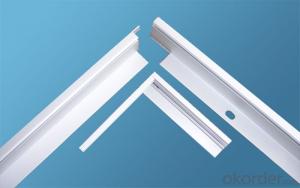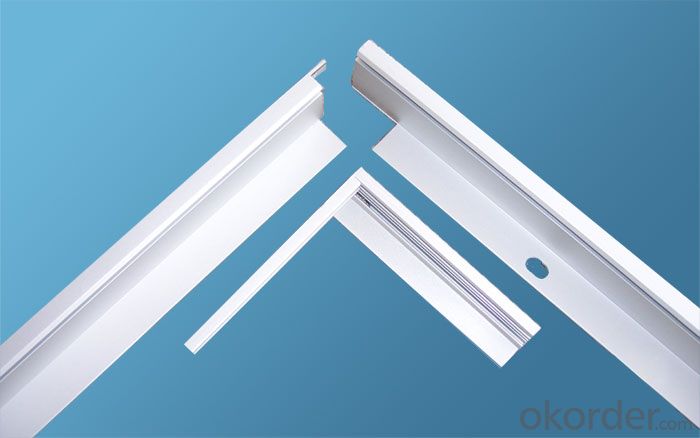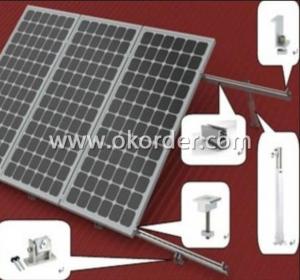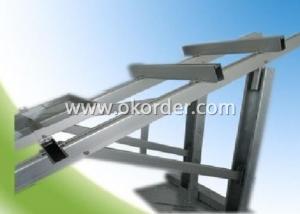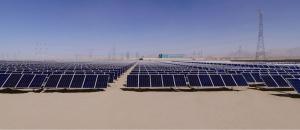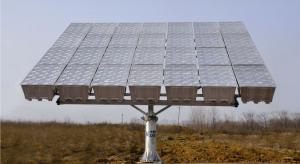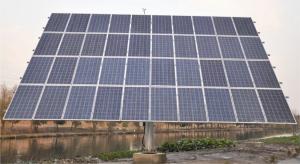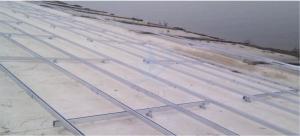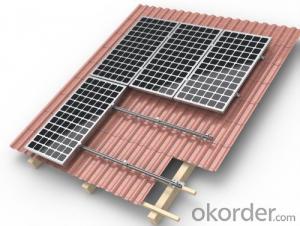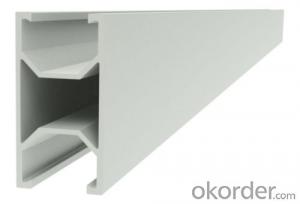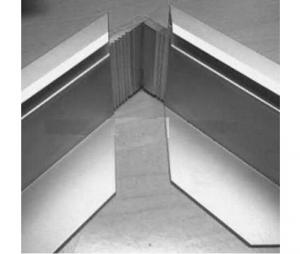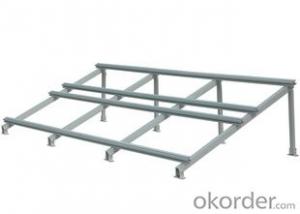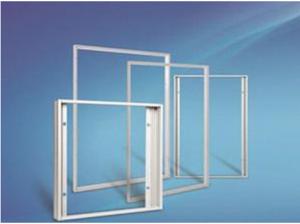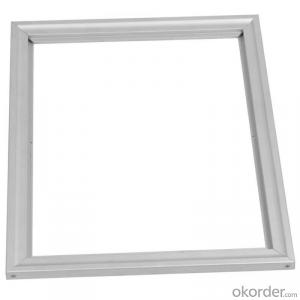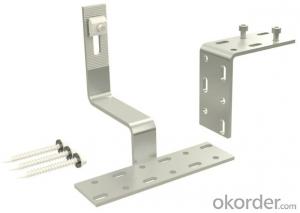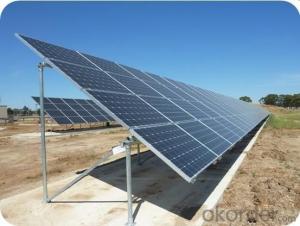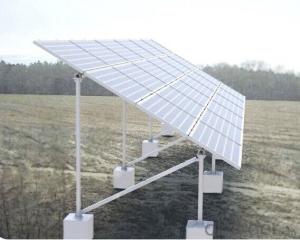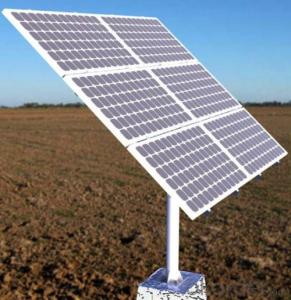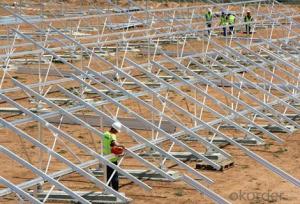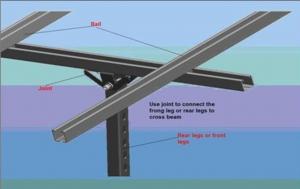Aluminium Solar Frame with Ironridge Mounting System Solar
- Loading Port:
- China Main Port
- Payment Terms:
- TT OR LC
- Min Order Qty:
- -
- Supply Capability:
- -
OKorder Service Pledge
Quality Product, Order Online Tracking, Timely Delivery
OKorder Financial Service
Credit Rating, Credit Services, Credit Purchasing
You Might Also Like
Specifications
Aluminium solar frame
1.good quality
2.Short lead time
3.Reasonable price
Aluminium solar frame
Packaging & Delivery
| Packaging Detail: | In carton or according to your request. |
| Delivery Detail: | 15-20 Days after receive the deposit |
- Q: What is the expected degradation rate of solar panels installed on a mounting system?
- The expected degradation rate of solar panels installed on a mounting system can vary depending on various factors such as the quality of the panels, the type of mounting system used, environmental conditions, and maintenance practices. However, on average, solar panels experience a degradation rate of around 0.5-1% per year, which means their efficiency decreases by that percentage annually. It is important to note that regular maintenance and cleaning of the panels can help minimize degradation and ensure optimal performance over time.
- Q: Can a solar mounting system be installed on a school or educational institution?
- Yes, a solar mounting system can be installed on a school or educational institution. In fact, many schools and educational institutions have embraced solar energy as a sustainable and cost-effective solution. By installing a solar mounting system, these institutions can generate clean energy, reduce their carbon footprint, and save on electricity costs. Additionally, it can serve as an educational tool, allowing students to learn about renewable energy and environmental sustainability.
- Q: Can a solar mounting system be installed in a high-wind or hurricane-prone area?
- Yes, a solar mounting system can be installed in a high-wind or hurricane-prone area. However, it is crucial to ensure that the mounting system is specifically designed and engineered to withstand the extreme weather conditions prevalent in such areas. These systems should be tested and certified to meet the required wind load ratings and be equipped with additional reinforcement features to prevent damage or failure during strong winds or hurricanes. Installation should also adhere to local building codes and regulations to ensure maximum safety and resilience.
- Q: Can a solar mounting system be used in areas with solar incentives for schools?
- Yes, a solar mounting system can certainly be used in areas with solar incentives for schools. These incentives are typically designed to promote the adoption of solar energy and make it more affordable for educational institutions. By installing a solar mounting system, schools can take advantage of these incentives to reduce their energy costs and contribute to a sustainable future.
- Q: Can solar mounting systems be installed on agricultural structures?
- Yes, solar mounting systems can be installed on agricultural structures. These structures, such as barns or storage buildings, can provide suitable surfaces for the installation of solar panels. This not only helps to generate clean energy but also maximizes the use of available space on the agricultural property.
- Q: Can a solar mounting system be installed on a rooftop with a torch-down roof?
- Yes, a solar mounting system can be installed on a rooftop with a torch-down roof. However, it is important to ensure that the mounting system is compatible with the specific type of torch-down roof and that proper installation techniques are followed to prevent any damage to the roof. It is recommended to consult with a professional solar installer or a roofing expert to ensure a safe and effective installation.
- Q: Can a solar mounting system be used with solar-powered off-grid systems?
- Yes, a solar mounting system can be used with solar-powered off-grid systems. The purpose of a solar mounting system is to securely hold the solar panels in place and optimize their angle towards the sun. This is equally important for off-grid systems as it is for grid-tied systems. The mounting system ensures that the solar panels receive maximum sunlight exposure, thereby maximizing the energy generation and efficiency of the off-grid system.
- Q: Are there any specific requirements for bifacial panel placement when using a solar mounting system?
- Yes, there are specific requirements for bifacial panel placement when using a solar mounting system. Bifacial panels are designed to capture sunlight from both sides, so they need to be mounted in a way that allows light to reach the rear side of the panels. This can be achieved by using a mounting system that elevates the panels off the ground, allowing light to reflect onto the rear side. Additionally, the mounting system should be designed to minimize shading and maximize the exposure of the rear side of the panels to sunlight.
- Q: Can a solar mounting system be installed on a golf course or country club?
- Yes, a solar mounting system can be installed on a golf course or country club. The wide open spaces and ample sunlight make it an ideal location for solar panels. Additionally, installing solar panels can help golf courses and country clubs reduce their carbon footprint and save on energy costs.
- Q: Can a solar mounting system be used on floating platforms?
- Yes, a solar mounting system can be used on floating platforms. Floating solar systems, also known as floating photovoltaic (FPV) systems, utilize specially designed mounting structures that can be secured to floating platforms such as pontoons or rafts. These systems are typically used on bodies of water like lakes, reservoirs, or ponds, providing an efficient and innovative way to harness solar energy.
Send your message to us
Aluminium Solar Frame with Ironridge Mounting System Solar
- Loading Port:
- China Main Port
- Payment Terms:
- TT OR LC
- Min Order Qty:
- -
- Supply Capability:
- -
OKorder Service Pledge
Quality Product, Order Online Tracking, Timely Delivery
OKorder Financial Service
Credit Rating, Credit Services, Credit Purchasing
Similar products
Hot products
Hot Searches
Related keywords
